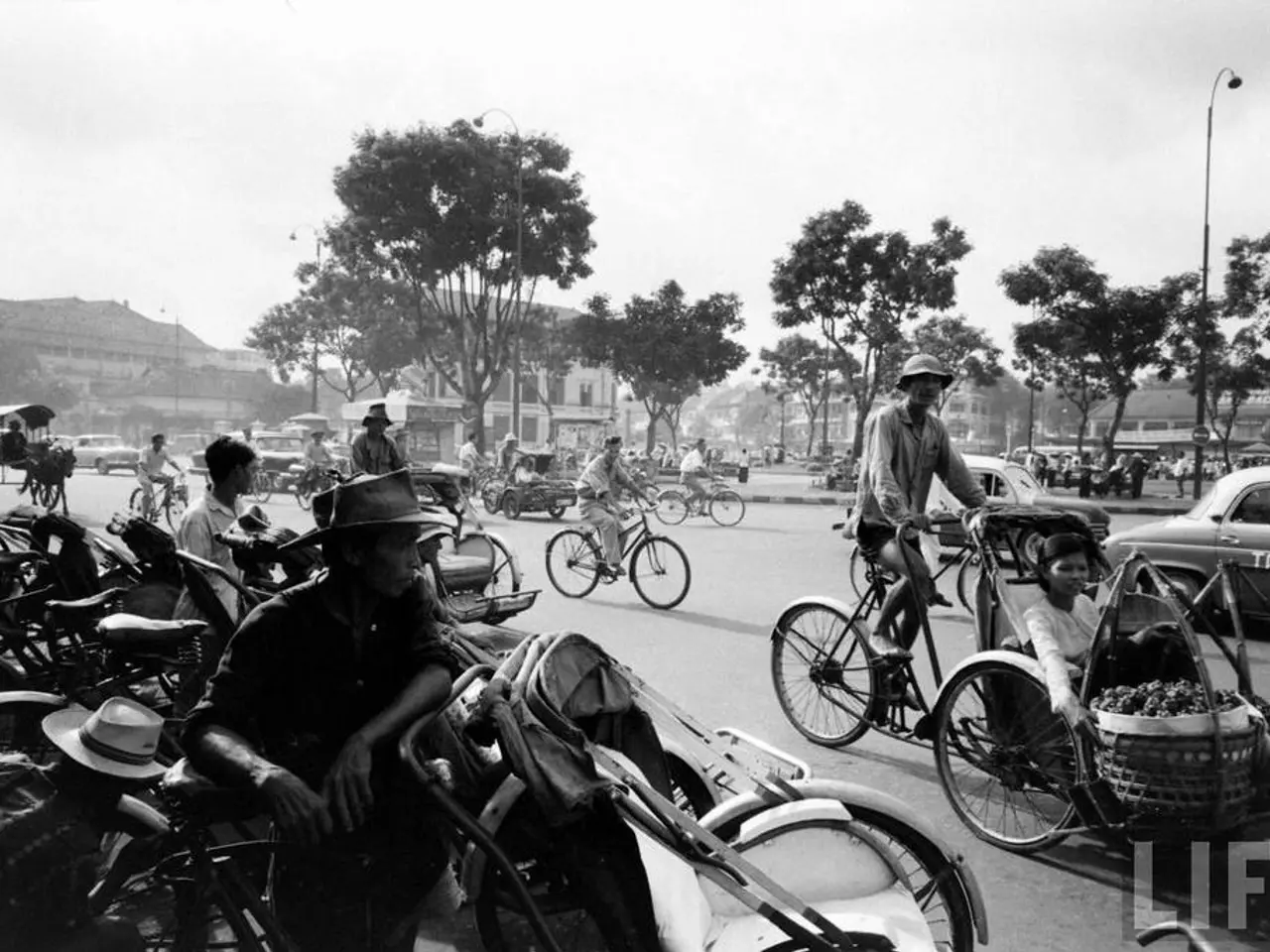Transit Development and What Lies Ahead
In a bid to revolutionise the American public transportation system, experts are advocating for a shift towards an approach that prioritises equity and accessibility. This new model, as discussed in The Frontline's article on the future of transit, proposes the creation of mobility hubs integrated with affordable housing and the provision of tailored, multimodal transportation options.
Jordana Maisel, the director of research at the University at Buffalo's IDEA Center, underscores the importance of city planners considering the unique concerns of various populations, including those with disabilities and those living in poverty. Ben Fried, communications director for the Transit Center, echoes this sentiment, stressing the necessity of expanding operating budgets to expand bus networks and make transit more appealing to all.
Tamika Butler, a principal in a consulting firm focusing on equity and anti-racism in the transportation sector, emphasises the need for more diversity in the sector's leadership. She identifies as a gender nonconforming, Black queer woman, and her perspective underscores the importance of representation in shaping the future of transportation.
The lack of diversity in the transportation sector, Butler argues, contributes to the continued failure of American public transportation. A shift in power and increased diversity, she suggests, is key to avoiding gentrification and building a utopian world of transit.
The Urban Institute estimates that a transformation to a New York City-level of public transit across the U.S. would require an additional $2 billion annual investment at minimum. This investment, however, would yield significant benefits, including reduced reliance on private cars, enhanced access to jobs, healthcare, and essential services, and a decrease in the transportation sector's greenhouse gas emissions, which currently make it the largest contributor in the U.S.
The proposed solution involves the establishment of mobility hubs at affordable housing sites, consolidating public transit with bike share, car share, and ride services. Customised services based on residents’ transportation needs, shared bikes, bike repair clinics, e-bikes, and electric car sharing would encourage active and low-carbon transportation. Discounted or free transit passes and monthly ride credits would improve affordability for low-income residents.
Partnerships between government, affordable housing organisations, and private companies would deliver these integrated mobility services. The focus would be on connectivity to transit while addressing “last-mile” travel barriers, safety, and walkability to ensure practical and equitable transportation access.
Additional related efforts include regional fare integration with fare capping to ensure affordability and state investments in clean mobility options with an emphasis on historically marginalised communities. These complement the core solution by advancing fare equity and environmentally sustainable shared transit alternatives.
However, a major barrier to implementing these changes is a lack of political will. President Joe Biden has pledged to provide every American city with at least 100,000 residents with "high-quality, zero-emissions public transportation options" through federal investments. Yet, the New York City subway system, for instance, fails to accommodate individuals with disabilities at 75% of its stations.
The COVID-19 pandemic has highlighted the need for safe and efficient transportation options. Cities like New York and Oakland have seen a rise in open streets, while Paris established special cycleways for bicyclists to safely commute to work during the pandemic. However, gentrification, displacement, and resentment can follow when equity is missing from the equation in urban planning and transportation.
In conclusion, investing in transit must go beyond just infrastructure expansion. Centring equity requires making multimodal, cost-effective, and accessible options available where people live, particularly in communities historically underserved by transit. This approach aims to address systemic transportation inequities by directly linking housing, transit, and affordable shared mobility.
- The Frontline magazine recently discussed the future of public transit in America, suggesting the creation of mobility hubs at affordable housing sites, incorporating multiple transportation options.
- The urban community would benefit from customized services based on residents' transportation needs, shared bikes, bike repair clinics, e-bikes, and electric car sharing, promoting active and low-carbon transportation.
- The newsletter on city planning highlights the importance of equitable access to transportation, particularly for those living in poverty and those with disabilities.
- The cultural shift towards equity in the transportation sector also encompasses diversity in leadership, as emphasized by Tamika Butler, a principal in a consulting firm.
- The environmental-science sector stands to benefit from reduced greenhouse gas emissions and a decrease in reliance on private cars as a result of improved public transit.
- Education-and-self-development programs can utilize the combined mobility hubs as locations for classes, workshops, and networking events, enhancing access to resources for underserved communities.




